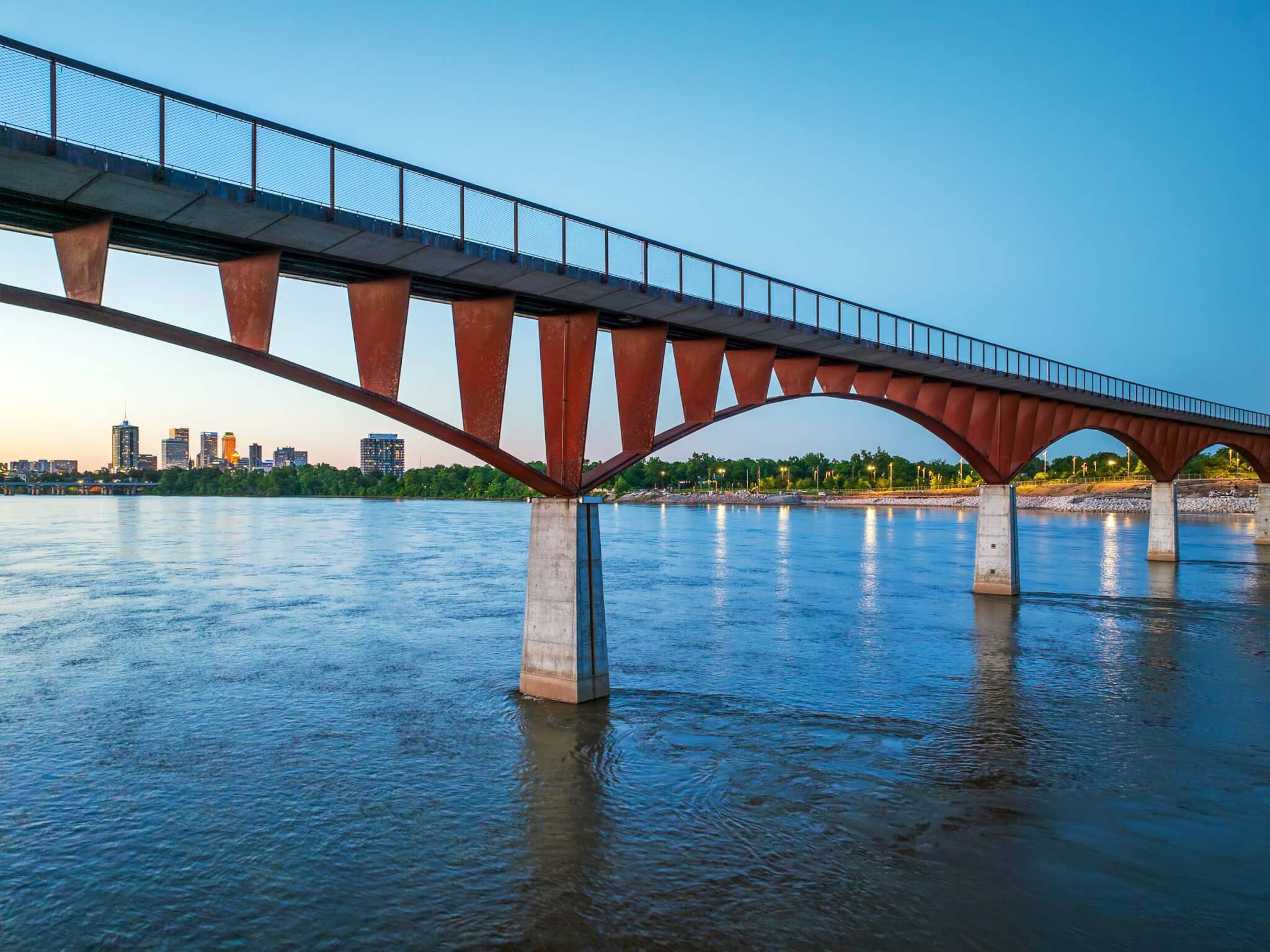An 18-foot-wide pedestrian bridge spanning the Arkansas River opened in Tulsa, Oklahoma this month. Williams Crossing, designed by schlaich bergermann partner (sbp), connects the east and west banks of the river and serves as a new scenic outlook and recreational space in proximity to the award-winning Gathering Place park. Just two miles from downtown Tulsa, this area offers trails, green spaces, and outdoor activities along the Arkansas River, attracting both residents and visitors alike.
The bridge, designed for cyclists and pedestrians, is 1,440 feet long. It connects the Gathering Place, a park designed by Michael Van Valkenburgh Associates (MVVA) completed in 2018, and the River Parks and Midland Valley Trails.

This bridge is part of a broader effort to replace the old Zink Dam with the new Zink Lake, offering users an improved way to relate with the Arkansas River. For decades, Tulasans lacked safe access to the river near the former pedestrian bridge, which had deteriorated over time and its gates became less operable. Recognizing this opportunity to improve river access and recreational activities, city planners partnered with sbp to create a plan that would link the community to the natural riverside. This decision ultimately led to the development of the new Zink Lake.
sbp’s design used lightweight design fabrication methods to optimize the bridge’s efficiency. The bridge’s shape was largely formed by eleven 120-foot weathered steel arches and one 120-foot approach span. Between the arch and the base of the bridge span, a series of vertical spandrel plates, that vary in thickness, were installed. These structures provide necessary stability and flexibility to accommodate live loads and temperature changes.

The deck combines an 18-inch reinforced concrete slab with a steel plate that supported the concrete during construction. Milled steel nodes, optimized for structural efficiency, support the transfer of loads between the arches, reducing both construction time and costs.
Additionally, to enhance the river’s natural flow, the design minimized the pier’s footprint and increased the vertical deck clearance to improve resiliency against more frequent 500-year flood events.
At night, Williams Crossings’s arches light up, casting striking reflections on the water below, cementing the bridge’s silhouette as a local landmark. The lighting design, featuring fixtures mounted both above and below the bridge deck, is the realized vision of Domingo Gonzales and Associates.

Williams Crossings opened in conjunction with other infrastructure projects in Tulsa aimed at redefining the river’s interaction with the community. Other projects include a recreational area known as Zink Lake designed by Jacobs Engineering and Merrick & Company; a 1,100-foot-long whitewater flume for kayaking, surfing, and rafting along the riverfront designed by MVVA in coordination with McLaughlin Whitewater Design Group; a nexus of regional trails along the Arkansas River and the Midland Valley Trail; and an additional 5.5 acres of waterfront park added to Gathering Place.
“This addition to Gathering Place will be one of the only places in Tulsa that invites people to explore the Arkansas River’s edge. It begins to shift the city’s relationship to the river, once a treacherous boundary. Williams Crossing is a significant step closer to a trail-connected chain of community assets like Gathering Place, Turkey Mountain, River West Festival Park, and Helmerich Park,” shared MVVA partner Gullivar Shepard.

